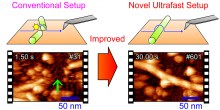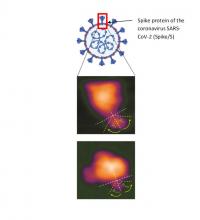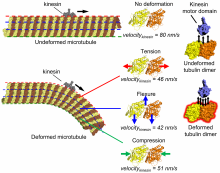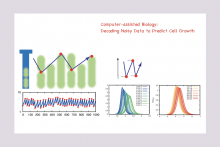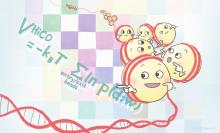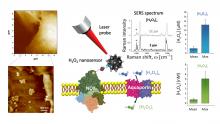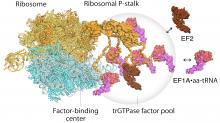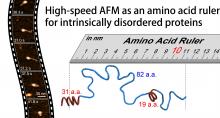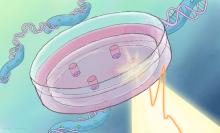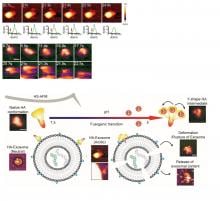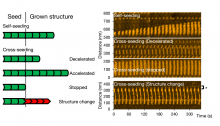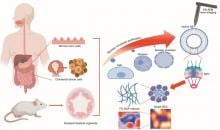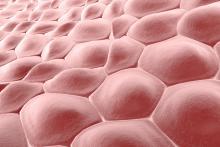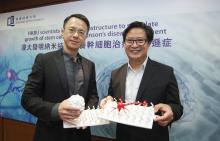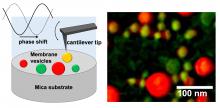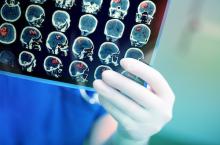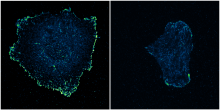Biology Biophysics
News
21 Mar 2022
Electrical stimulation of nerve fibers could promote the growth of the myelin sheath, a protective layer around neurons that is crucial for transmitting nerve impulses. The finding, published in the journal Biofabrication, introduces a new paradigm in the treatment of diseases where the myelin sheath is progressively lost, leading to muscular atrophy, hand and foot deformities, gait abnormalities, and paralysis.
03 Mar 2022
Giants in History: Gopalasamudram Narayanan Ramachandran (8 October 1922 – 7 April 2001) is best known for developing the Ramachandran plot to understand the structure of short chains of amino acids, known as peptides.
04 Jan 2022
Researchers at Kanazawa University report in Applied Physics Letters the design of an ultrafast amplitude detector for use in high-speed atomic force microscopy. The detector will enable the real-time recording of fast dynamical processes of biomolecules.
15 Dec 2021
In a recent study published in the Journal of Extracellular Vesicles researchers from Kanazawa University have visualized structural changes on the surface of SARS-CoV-2 that enable it to enter human cells.
13 Oct 2021
Direct evidence that microtubules function as mechano-sensors and regulate the intracellular transport of molecules has been reported, leading to new possibilities in the fields of biomechanics, medicine, and biosensors.
08 Jul 2021
Researchers at The University of Tokyo Institute of Industrial Science use artificial intelligence to predict the size of cells over time without the need for simplifying assumptions, which may lead to a new understanding of microbiology principles and improved drug manufacturing from recombinant bacteria
31 May 2021
High-resolution genome structural analyses combined with large-scale simulations show the arrangements of the genome’s spool-like structures affecting gene expression.
08 Mar 2021
Researchers at Kanazawa University report in Biosensors and Bioelectronics a successful test of a sensor for measuring hydrogen peroxide concentrations near cell membranes. The sensor has the potential to become a tool for new cancer therapies.
07 Jan 2021
Factor-pooling by ribosomes caught on video using state-of-art high-speed atomic force microscopy technology.
28 Dec 2020
Kanazawa University’s pioneering high-speed atomic force microscope technology has now shed light on the structure and dynamics of some of life’s most ubiquitous and inscrutable molecules – intrinsically disordered proteins. The study is reported in Nature Nanotechnology.
03 Oct 2020
A new apparatus improves how we study the effects of aiming high-field terahertz radiation at cells, with implications for regenerative medicine.
16 Aug 2020
Researchers in Kanazawa University has recently reported their study in Nano Letters regarding a high-speed atomic force microscopy study on a biological event that happens during flu virus enters infects its host cell. The real-time visualization of influenza A hemagglutinin (HA) has enhanced the understanding of fusogenic transition of HA and its interactions with host endosomes.
03 Aug 2020
Researchers at Kanazawa University report in ACS Nano a high-speed atomic-force microscopy study of the formation of protein fibrils (amyloids) associated with pathologies in collaborated research with Showa University. Mixing different variants of a single protein and changing the acidity of its environment is shown to result in significant variations in amyloid structure and elongation rates.
06 Jul 2020
Researchers at Kanazawa University report in Biomaterials a high-speed atomic-force microscopy study of protein filaments in the nuclear pore complex. The visualization in real-time of the filaments’ dynamics is an important step in our understanding of molecular transport mechanisms between a cell nucleus and its surrounding medium.
20 Jun 2020
Researchers at Kanazawa University report in the Biophysical Journal that the process of cell removal from an epithelial layer follows from an inherent mechanical instability. Moreover, the forces generated by an extruding cell can drive the extrusion of other cells in a particular direction.
03 Jun 2020
Researchers from Hong Kong Baptist University (HKBU) have invented a nanostructure that can stimulate neural stem cells to differentiate into nerve cells. They found that the transplantation of these nerve cells into rats with Parkinson's disease progressively improved their symptoms, with the new cells replacing damaged nerve cells around the transplantation site. This novel invention provides promising insights into stem cell therapies and offers hope of a new treatment for Parkinson's disease.
07 Apr 2020
Researchers at Kanazawa University and Tsukuba University report in Nanoscale that the physical properties of extracellular bacterial membrane vesicles are significantly diverse. The properties for a single type of bacterium as well as for different types are found to be highly heterogeneous.
26 Mar 2020
In a recent study published in Autophagy, researchers at Kanazawa University show how abnormalities in a gene called TPR can lead to pediatric brain cancer
26 Nov 2019
Researchers from the Mechanobiology Institute at the National University of Singapore have shown that cells can attach to the fibrous protein meshwork that surrounds them only if the fibres are spaced close enough. The team’s findings can explain the abnormal motility patterns displayed by cancer cells.
19 Sep 2019
Professor Eun-Kyoung Kim’s team in the Department of Brain and Cognitive Sciences discovered the mechanism underlying the regulation of energy metabolism by hypothalamic tanycyte. Proposed a new research direction to develop an enhanced obesity treatment.
19 Aug 2019
DGIST Professor Jaeheung Cho in the Department of Emerging Materials Science secured materials that lead aldehyde deformylation reaction. Confirmed the nucleophilic reactions by biomimetic materials… Expects to bring positive impacts on related research.
Events
Sorry, nothing coming up for this discipline
Researchers
Sorry, nothing coming up for this discipline
Giants in history
Sorry, nothing coming up for this discipline



